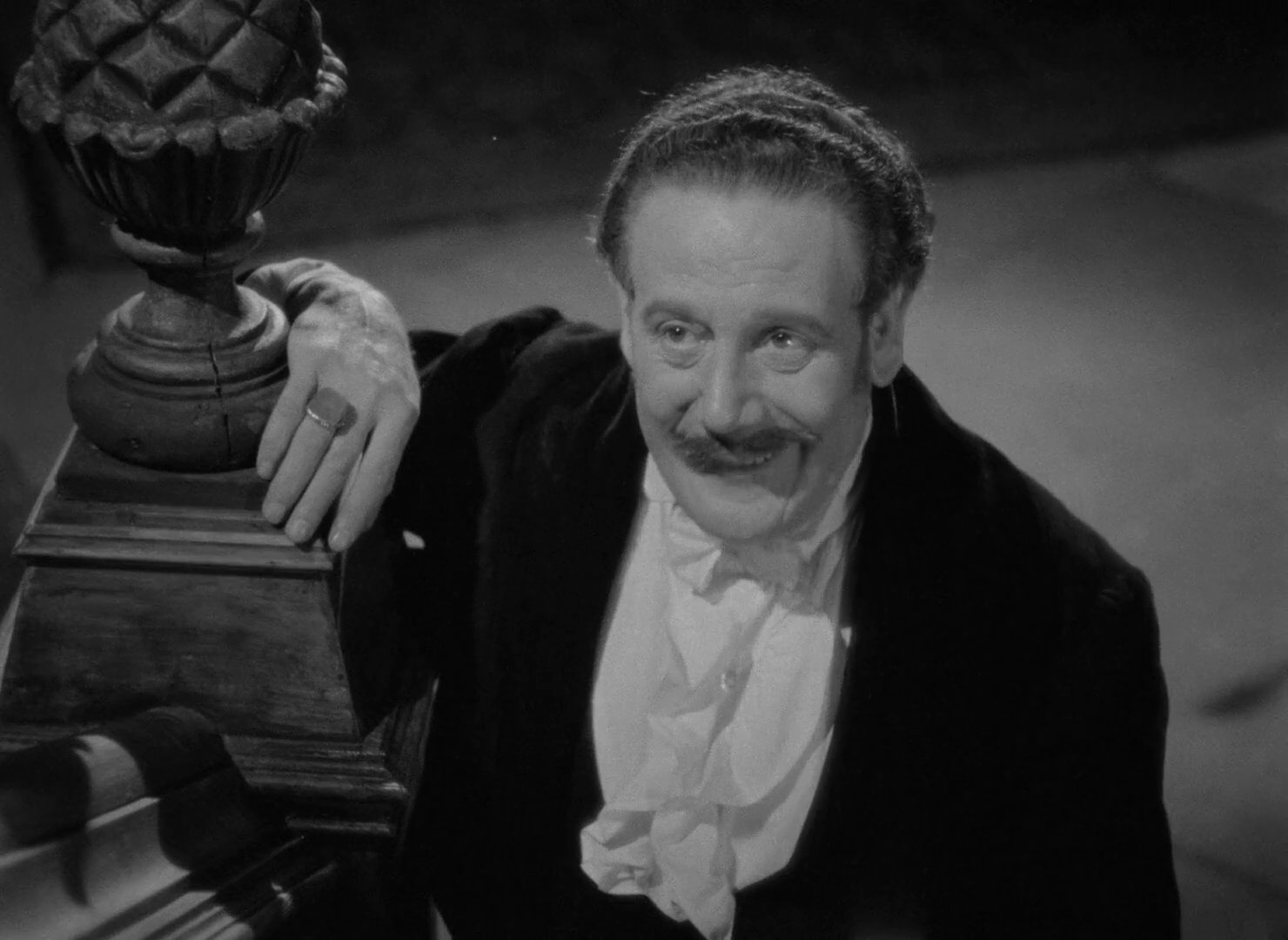
Crimes At The Dark House (1940)
“You wanted to be a bride, so you shall be… a bride of death!”
It’s Australia, 1850. And with no Neighbours to keep people entertained for another 136 years, people are resorting to other means of entertainment. Ramming tent pegs into each other’s ears is the latest craze, but there’s always someone who has to take it too far, isn’t there? Surely using a hammer is against the rules?
And with that incredibly brutal murder happening off-screen but still somehow burned into our retinas, so starts Crimes At The Dark House.
The chap with the over-perforated eardrum was the former owner of a bag of gold (him being a gold miner), but the unseen murderer has hit a much bigger jackpot, as it turns out that his victim has also just come into an inheritance back in England. Even better, the dead man left the ‘old country’ when he was a much younger man, and it’s unlikely anyone at his former pile, Blackwater Park, will recognise him.
And so ‘Sir Percival’ (Tod Slaughter) arrives home, shortly after word reaches the servants that their lord and master is on his way back, having ‘made a fortune in the goldfields of Australia’. They are all very keen to meet him, wondering if he’s changed much.
Of course, he has changed – it’s almost like he’s a completely different person. And he seems awfully keen to find out if there is anyone left at the house who might remember the actual Sir Percival. Having satisfied himself that no-one can recall what Sir Percival actually looked like, the imposter moves on to checking out the younger ladies in his employ, licking his lips at the sight of one, who he immediately promotes from parlourmaid to chambermaid (if you catch my drift – and, yuck).
But things aren’t going all his way. It turns out his new home is mortgaged to the hilt, and there’s no money. Everyone was relying on the fortune he was rumoured to have made in Oz, which of course doesn’t exist. Apoplectic with rage at this news, and that he may be expected to prove his identity by showing a birthmark (“Dammit, sir, are you expecting me to remove my trousers?!”), he then learns that before “he” left for Australia, he may have been betrothed to a girl who can bring him a dowry of £100,000.
This is Laura, who with her sister lives with their guardian, a man stricken with a double case of nervous exhaustion and overactingitis (“Louise, my smelling salts! Was there ever such an unfortunate man as me?!”).
Before “Sir Percival” can visit his unwitting bride-to-be, he has visitors himself, in the form of a woman who had an affair with the real Sir Percival before he left for Australia, and the owner of a mental asylum, who informs the fake Sir Percival that in his absence, the woman had his daughter who went mad and is now locked in the asylum, consumed with hate for her father for what he did to her mother.
(Keeping up? As you may have guessed, this film packs a LOT into its very short run-time)
The pair have realised that Sir Percival is not who he says he is, but the doctor is willing to keep his secret… for a price. “Sir Percival” welcomes this new partnership, but adds that if the doctor betrays him, he’ll feed his entrails to the pigs.
“Sir Percival” now hot-foots it to his betrothed’s home, where the sight of her prompts much moustache-twiddling. It’s clear he’s not letting her out of their ancient agreement and he sets the wedding for six weeks hence.
Meanwhile, the “daughter” has escaped from the asylum, and the doctor is convinced that her “insane hatred” will bring her to the house. The chambermaid is pregnant, and what else? Ah yes, a ghost has also been seen at the windows of the hall. It certainly is all happening.
First things first, though… “Sir Percival” needs to deal with the chambermaid problem. Suggesting that they’ll run away together to get married (“Go pack yourself a few things, you’re going on a journey. Yes, a very long journey…”) he takes her down to the boathouse and strangles her, giggling as he does it. “You wanted to be a bride, so you shall be… a bride of death!”
The wedding day arrives, and as a viewer you feel genuinely worried for the feisty but seemingly doomed Laura. Sir Percival’s housekeeper, who at first looked keen to keep a lid on his shenanigans, is now leaning into her role as enabler to this monster. Leading to the wedding night itself, which has to rank as one of the more unsettling scenes in British horror film history.
But Laura isn’t the pushover he had hoped she would be, and as the imposter gets more frustrated by his lack of access to her cash, he gets overtly handsy-vs-necksy with anyone else who gets in his way, then concocts a nefarious scheme involving some improbable look-alikes and an interesting take on patient care (“There may be a change for the better in the morning! Ha ha ha ha!”).
We’re all set for an action-packed and flaming ending, which surpasses similar scenes in films made decades later with much bigger budgets.
Crimes At The Dark House is a spectacular gem. Despite its age it is genuinely horrible, with a “can’t take your eyes off him” turn from its star, a witty script (“You always said you were a teetotaller… now you’re going to have a nice drop!”) and a galloping, not-a-shot-wasted pace.
